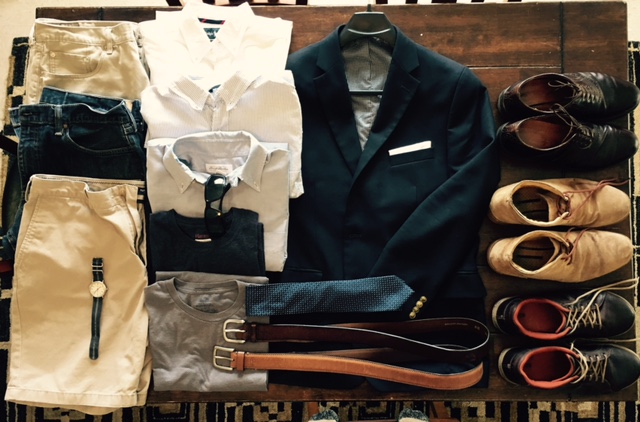Understanding How to Build a Minimalist Wardrobe for Men
Whether you’re really into minimalism, a clothing aficionado, or simply looking for a way to start anew and clean out, you’ve most likely asked yourself whether you really need all those piles of clothes in your closet.
Chances are that you’ve already answered it as well: you probably don’t. And no, you really don’t.
The good news is that you can still look your best while keeping your wardrobe to a bare minimum, as long as you keep the principle of interchangeability in mind. Ideally, all the clothes you have should work together.

The Paradox of Choice
This is the first, and perhaps the biggest, hurdle that you need to overcome when building a cohesive wardrobe. The more options you have, the less likely you are to choose – and the more likely you are to stick with what you “usually” wear.
This is what is known as the “paradox of choice” at work. Another instance of this paradox at play is when you are presented with a long menu at a restaurant, and you end up taking forever to order.
Getting past this hurdle may seem difficult when you first look at it. But when you look a little closer, you will find that a few of the many outfits you have are the ones you actually look – and feel – your best in. Keep only those and get rid of the rest.

How Great Style Starts With Fewer Clothes
The principle of interchangeability for your clothes goes like this: twenty percent of your clothes go with eighty percent of your outfits. Once you’ve tossed all the non-essentials, there are a few crucial guidelines that you need to follow when building your wardrobe:
• Color – The foundation of your wardrobe should rest on solid, neutral colors. You can never go wrong with black, white, navy, and khaki. Get rid of the graphics, logos, and the unique patterns.
• Versatility – You need pieces that can stand up to double, or even triple duty, especially when it comes to pants. In a minimalist wardrobe, special-use items (items for specific occasions only, i.e. tuxedos) have no business being here.

• Appropriateness – As much as you think you need to pare down, you still need clothes that are appropriate for the occasion. If your job requires formal attire, you can’t show up in a shirt and jeans.
Your wardrobe might lean towards casual or formal depending on what your lifestyle and day job demands from you, but should ideally consist of not more than twenty pieces.
An example of a minimalist wardrobe can consist of two jackets, eight tops (t-shirts, polo shirts, and button-ups), 2 pants, eight pairs of socks and underwear, two pairs of shoes (one formal, one casual), bringing you to a total of fourteen pieces.

